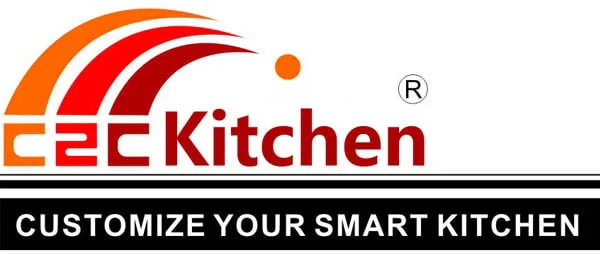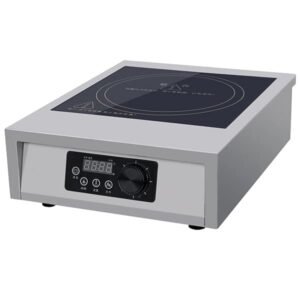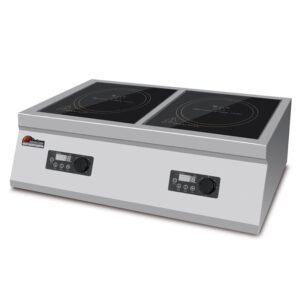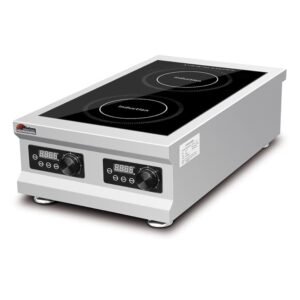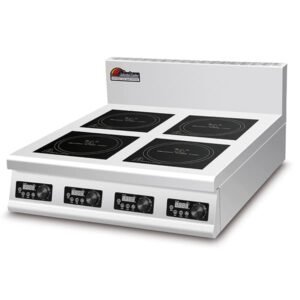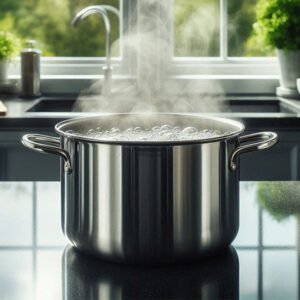Overview
The induction cooktop is an electric-powered culinary appliance categorized as a flameless cooker. Unlike conventional cooking methods, this innovation employs electromagnetic induction heating, allowing the cookware to heat up while the cooktop itself remains cool. This induction heating technology ensures safety, with a lower risk of burns, as the cooktop temperature stays relatively low. This design not only enhances user comfort by preventing a significant rise in ambient temperature but also contributes to heightened energy efficiency, leading to energy savings and increased environmental friendliness.

Principle
The induction cooktop operates on the principle of electromagnetic induction heating, where electrical energy is converted into heat within the cookware through fluctuations in the magnetic field.
Beneath the cooktop’s thermal insulation board, there exists a copper wire coil generating an alternating magnetic field, typically with a frequency ranging from 20kHz to 27kHz. As a ferromagnetic metal vessel is placed on the cooktop, energy undergoes two key physical phenomena, transforming into heat within the cookware:
1.Eddy current: The alternating magnetic field induces eddy currents at the vessel’s bottom, encountering resistance and converting into heat.
2.Hysteresis loss: The changing magnetic field direction causes energy loss in the vessel’s metal, transforming into heat.
The primary heat source is the eddy current, with hysteresis loss contributing less than 10%. Once the cookware is heated, it transfers the heat to the food.
The copper coil, with numerous turns, acts as a transformer with multiple primary turns and a single secondary turn, akin to a step-up transformer. The high impedance of the multi-turn copper coil results in a significantly lower current compared to the eddy current within the vessel, minimizing heat loss in the copper coil. Consequently, the vessel heats up, not the copper coil.
Types of Induction Cooktop
Types of induction cooktops include double or single-headed, built-in or standalone, portable, and commercial or household models. Control options encompass touch-sensitive buttons or electronic controls.
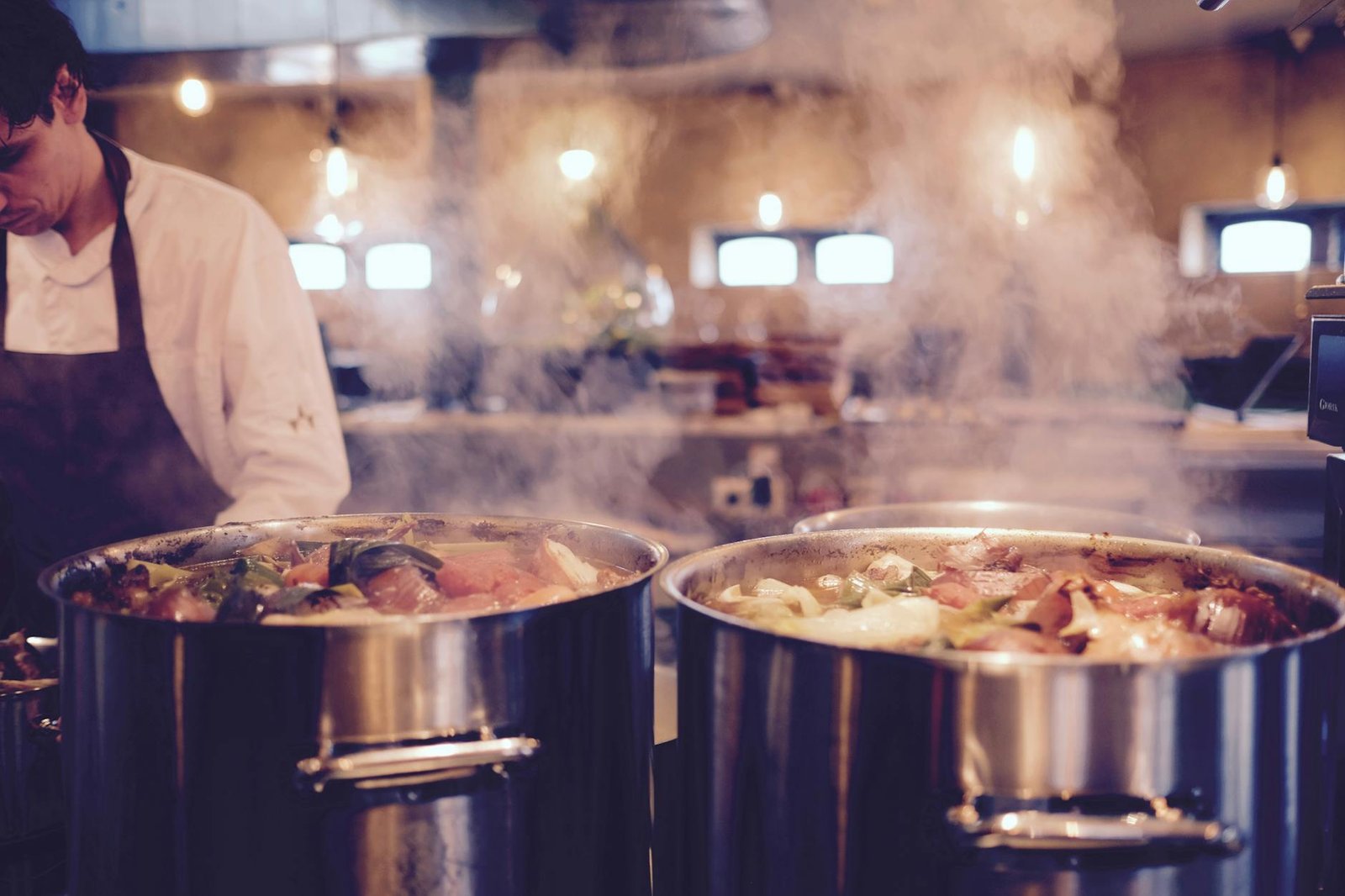
Compatible Cookware
While not exclusive to ferromagnetic metal vessels, only such vessels achieve high energy conversion efficiency. Non-ferromagnetic metal vessels are less efficient for cooking purposes. Common ferromagnetic metals include iron, cobalt, and nickel. Stainless steel, steel, and enamel-coated vessels are suitable for induction cooktops. However, traditional ceramic pots and regular aluminum cookware are not suitable. Some induction cooktop-specific pots contain hidden ferromagnetic metals, making them compatible.
Benefits of Induction Cooktop
Ease of Operation
- The cooktop surface is easy to clean.
- Precise control of heat through current adjustment.
- Easily controlled by microcomputers, allowing for cost-effective additional features such as automatic shutdown after a set time or reaching a specific temperature.
Health and Safety
- Does not consume oxygen or produce carbon dioxide indoors.
- No risk of carbon monoxide due to incomplete combustion.
- Enters standby mode automatically when the cookware is removed, reducing waste and danger.
- No risk of gas leaks like gas stoves.
- Surface temperature decreases rapidly after removing the cookware, reducing the risk of burns.
- No Electromagnetic Radiation Concerns
The heating principle of the induction cooktop is achieved by generating an alternating magnetic field, not electromagnetic waves (radiation). The nature of the magnetic field differs from the electromagnetic waves produced by microwave ovens or mobile phones. It’s similar to how an electromagnetic iron produces a strong magnetic field when powered, yet it doesn’t emit electromagnetic waves. Although continuously switching on and off an electromagnetic iron can generate electromagnetic waves, this is also the operational mode of the induction cooktop. However, due to the induction cooktop’s operating frequency of only 20-27kHz, similar to the working frequency of a fluorescent electronic transformer (much lower than one-three-thousandth of a mobile phone and one-ten-thousandth of a microwave oven), the generated electromagnetic field falls into the near field. Within less than a foot from the induction cooktop, these low-frequency electromagnetic waves have completely dissipated, resulting in much weaker intensity. Therefore, induction cooktops do not emit electromagnetic radiation at levels that could pose a health risk.
Efficiency and Environmental Impact
Energy conversion efficiency is high, with 90% of electrical energy converted to heat. Higher efficiency compared to electric and gas stoves. Depending on regional factors, induction cooktops can be environmentally friendly, especially in terms of reduced cooling needs due to lower indoor heat production.
Disadvantages
Limited Cookware Compatibility:
- Only vessels made of ferromagnetic materials, such as iron or steel, are suitable for use.
- The vessel shape should be flat to closely adhere to the induction surface.
- Not Suitable for Certain Medical Devices:
- Individuals with pacemakers or defibrillators may need to avoid using induction cooktops due to potential interference with these devices.
- Longer Heating Time: Induction cooktops may have longer heating times compared to traditional methods.
Usage
Induction cooktops are commonly used in household cooking due to their flameless, low-temperature surface and absence of flammable gases. However, they are not suitable for preparing traditional Chinese medicine, which often requires non-metallic vessels to avoid chemical reactions.
-
 3500W Commercial Induction Cooker Single Induction Cooktop – Stainless Steel Induction Hob Ceramic Glass Cooker
3500W Commercial Induction Cooker Single Induction Cooktop – Stainless Steel Induction Hob Ceramic Glass Cooker -
 Double Ceramic Induction Cooktops – 5000w-8000w Stove Hob for Profesional Electric Cooking
Double Ceramic Induction Cooktops – 5000w-8000w Stove Hob for Profesional Electric Cooking -
 Tabletop Profesional Ceramic Induction Cooktop – 5000-8000w Kitchen Stove for Commercial Use
Tabletop Profesional Ceramic Induction Cooktop – 5000-8000w Kitchen Stove for Commercial Use -
 3500w 5000w Ceramic Commercial Induction Cooktop – Hob Stove for Profesional Electric Cooking
3500w 5000w Ceramic Commercial Induction Cooktop – Hob Stove for Profesional Electric Cooking -
 Profesional Double Electric Commercial Induction Cooker – 2 Burner 3500 Induction Stove Hob with Ceramic Cooktops
Profesional Double Electric Commercial Induction Cooker – 2 Burner 3500 Induction Stove Hob with Ceramic Cooktops -
 Table Top Induction Range for Restaurant – Countertop Ceramic Top Range Electric Cooker With Induction Cooktop With Knobs for Sale
Table Top Induction Range for Restaurant – Countertop Ceramic Top Range Electric Cooker With Induction Cooktop With Knobs for Sale -
 Invisible Induction Cooktops Under Granite – Single Burner Under Countertop Hidden Integrated Built In Induction Stove with Best Price$190.00???????? 5.00 ??? 5 ??????????? 1 ????????????????????
Invisible Induction Cooktops Under Granite – Single Burner Under Countertop Hidden Integrated Built In Induction Stove with Best Price$190.00???????? 5.00 ??? 5 ??????????? 1 ????????????????????
